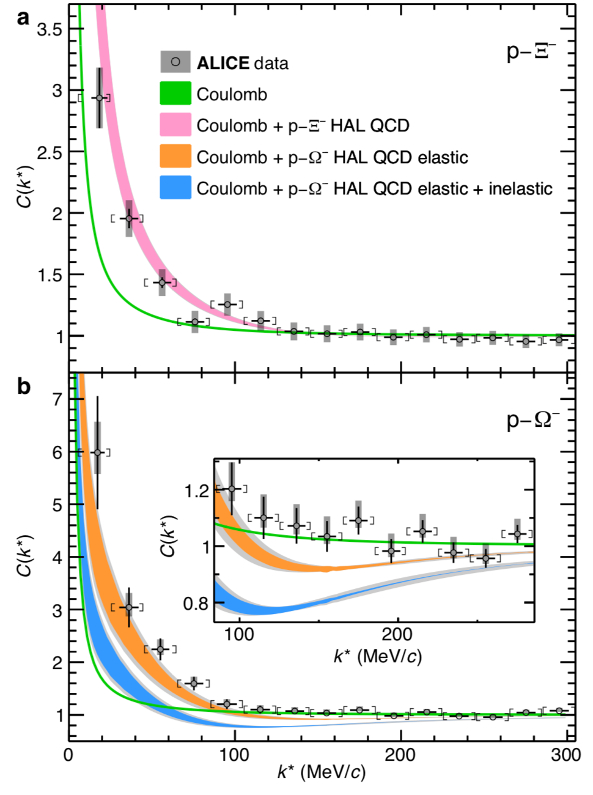The ALICE experiment measures the interaction between protons and multi-strange baryons
The measurement of the interaction between protons and “hyperons” improves our knowledge of the strong interaction and it will contribute to the understanding of the structure of neutron stars.
A precise measurement of the strong nuclear force, responsible of the interaction between hadrons, allows us to confirm the expectations of the Quantum Chromodynamics (QCD), which is the theory describing the strong interaction, and to study a frontier topic of nuclear physics: the mechanism that determines the formation of “exotic” states of matter, like those that could exist in the core of neutron stars.
As described in an article just published on Nature (https://www.nature.com/articles/s41586-020-3001-6), the ALICE collaboration developed and applied a new method to measure this interaction by means of the hadrons produced in proton-proton collisions at the CERN Large Hadron Collider (LHC). The measurement was indeed feasible thanks to the specific characteristics of the experiment, in which INFN plays a pivotal role.
The strong nuclear force, carried by gluons, is not only responsible of binding together protons and neutrons within the atomic nuclei, but it determines the interaction between hadrons that contain less common quark flavours. Hyperons belong to this family of hadrons: they are baryons containing one or more strange quarks, which are not present in the atomic nuclei, hence in the ordinary matter, but that could exist in neutron stars.
Because of the instability of hyperons it has been difficult, if not impossible, to achieve an experimental validation of the QCD calculations for what concerns this aspect of the strong interaction. ALICE employed a technique named femtoscopy, because it addresses phenomena at the femtometre (10-15 m) scale, which is about the size of a hadron and the range of the strong interaction. Femtoscopy is based on the quantum mechanical principle that links the momentum difference between two particles to their distance when interacting at short-range. The application of this technique to LHC collisions allowed the ALICE collaboration to measure for the first time the attractive force due to the strong interaction existing between a proton and the heaviest hyperon, consisting of three strange quarks: the Ω particle.
According to Andrea Dainese, Physics Coordinator of ALICE, and researcher of the INFN unit in Padova “The results reported in this article are an important milestone and also a starting point to explore with ALICE this domain of the strong interaction. They confirm the versatility of an experiment designed to study the Quark Gluon Plasma in heavy-ion collisions at the LHC, but now evolved in a tool able to unveil several other aspects of the quantum chromodynamics”.
An additional fascinating application of the method described in the article published on Nature concerns the understanding of the state of matter constituting the core of neutron stars. Because of the high pressure inside these stars, hyperons may be formed thanks to the fact that strange quark production is energetically favoured in these extreme conditions. The future measurements of the interaction between ordinary (protons) and strange (hyperons) matter by means of femtoscopy represent essential elements to determine the equations of state of the matter in the neutron stars and to predict their time evolution.
The effectiveness of this new analysis technique and the precision of the measurements rely on the excellent performance of the ALICE detectors, which are able to identify the particles produced in the proton-proton collisions at the LHC and to measure both their momenta and their decay products. According to Massimo Masera, University and INFN of Torino, coordinator of the Italian groups in ALICE “INFN played an essential role in designing and building the Inner Tracking System, which is used to detect the hyperon decays, and one of the largest detector in ALICE, the Time-Of-Flight detector, used to identify charge particles”.

Momentum correlation functions measured by ALICE for p-Ξ (a) e p-Ω (b) pairs. A correlation value above unity for momentum differences (k*) close to zero indicates an attractive interaction. The data are in excess with respect to the green curve representing the Coulombian interaction: this is consistent with a relevant attractive force, which is compared to the lattice QCD calculations.